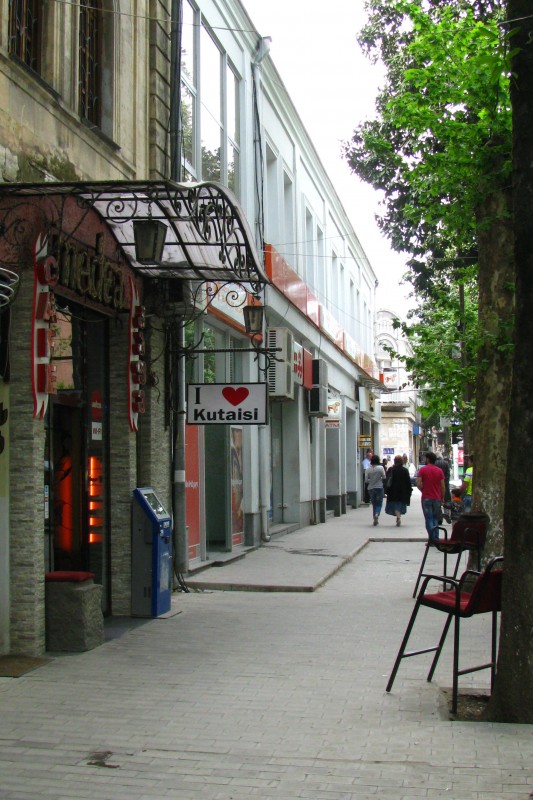
That’s Georgian for “I ♥ Kutaisi.” Like the New York City ad campaign on which it’s based, it’s become a part of the local culture. You can see it on billboards, street signs, stickers, t-shirts–unlike the US, where it’s uncool to wear a band’s t-shirt at their own concert, everyone was wearing their “I ♥ Kutaisi” shirts at Kutaisoba last week.
So since I’ve been living here in Kutaisi for almost three months, I thought I’d give you all a virtual tour of the city–or at least the downtown area, since Kutaisi is really more like a very big village with a city in the middle. But that’s why I love it.
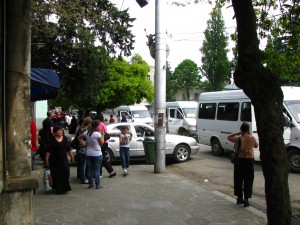
Our tour starts at the main marshrutka terminal downtown, Tsitelikhidi, or Red Bridge Station. The place is a wonderfully chaotic mess of taxis, buses, and marshrutkas, while their drivers pass the time by smoking cigarettes and yelling at each other. Old women wander around the crowds selling khatchapuri and lavash, while people are constantly coming and going. Interestingly enough, this is also where you can find one of the largest concentrations of apothekas (pharmacies) in the city.
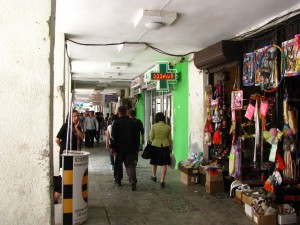
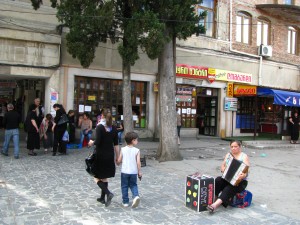
The sidewalk leading away from the station leads into a long narrow corridor typical of most Georgian street markets, with stalls and vendors packing every available space. Here you can find cookies, ice cream, and cold drinks, both soft and hard; candles, religious icons, and other “souvenirs,” as the vendors like to call them; cheap plastic goods from China, wrapped in dusty plastic; freshly killed meat hanging from butcher’s windows; and all sorts of other random things. But as busy as this place seems, it’s nothing compared to the main marketplace.
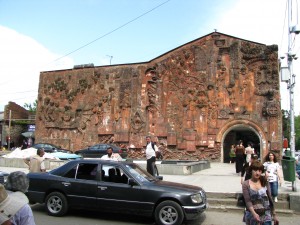
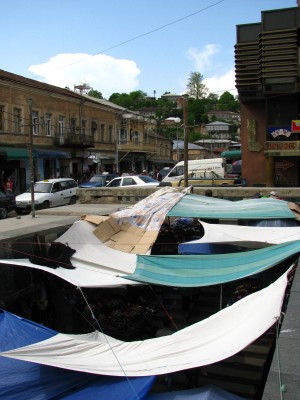
The corridor opens up at the end of the block, to a tunnel which leads underneath the main road (Rustaveli, named after the great medieval Georgian writer) to Mirzani restaurant on the far side. At the mouth of the tunnel, tarps and blankets stretch haphazardly over vendors selling clothes, cheap shoes and cigarettes. Further down the tunnel, you can find more clothes, belts, brassieres, more shoes, and all sorts of fabrics.
We continue past an old building with a giant frieze, presumably depicting scenes from the history of the city. There’s a lot of history to choose from–Kutaisi was the capital of ancient Colchis, and a major regional center throughout the Middle Ages, when locally-born King David the Builder united all of Georgia, turning it into a “land between two seas.”
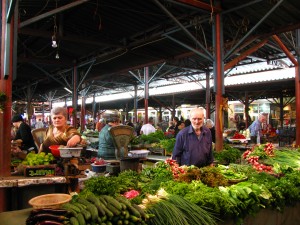
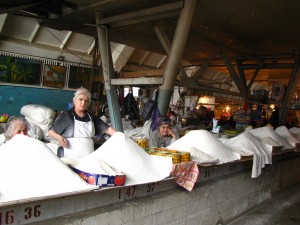
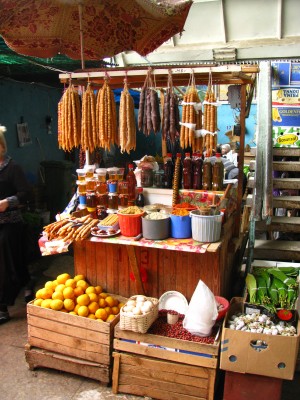
Next, we take a left and promptly get lost in a giant bazaar. Here, you can find all sorts of fruits and vegetables, beef and chicken, bread and cheese, wine and beer–basically, anything that you would usually get from a grocery store in the US. Georgians have grocery stores too, but the bazaars are usually cheaper and fresher. Plus, they’re a whole lot more fun. I’ve heard that you can haggle with the vendors, though the prices are so low (1.5 GEL for a kilo of apples) that I’ve never felt a need.
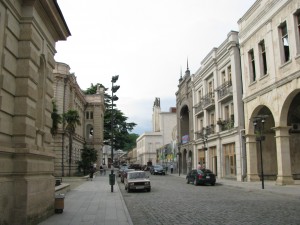
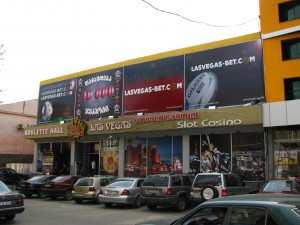
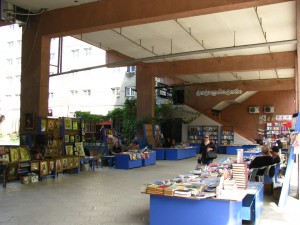
We spend a little bit of time wandering around before going to the main city park. Heading up towards Jatchviskhidi, you can find all sorts of pawn shops, casinos, and money exchanging places, while near the library (at least, that’s what I think it is) there’s a mini-bazaar with all sorts of books. Of course, that’s one of my favorite places to check out!
Along Rustaveli Avenue, however, the city takes on a pleasant European feel, with attractive cobblestone streets, wide boulevards, and Napoleonic architecture. Here, you’ll find the opera house, the mayor’s mansion, and the central school (of 44 public schools citywide).
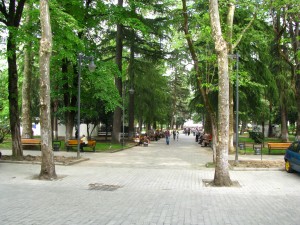
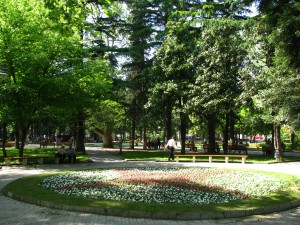
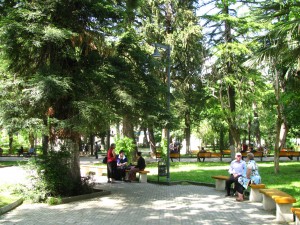
Next we come to Bulvari, the main central park of Kutaisi. On a hot, muggy day, this is the perfect place to relax, with shady palm and pine trees, attractive public fountains, and plenty of benches to go around. Vendors sell balloons, candy, and ice cream, while at the center, old men with cheap plastic cars take children for a ride around the main circle.
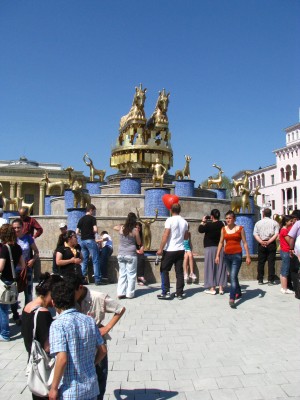
The main city square is on the other side of the park, with the theater on the left, the banking district on the right, and a giant fountain in the center depicting replicas of ancient Colchian artifacts found in Imereti province. It’s one of the many interesting ways the city has been trying to reinvent itself since the end of the Soviet Union. The statue of David the Builder that once graced this square now stands in front of the train station, at the end of the boulevard that bears the same king’s name.
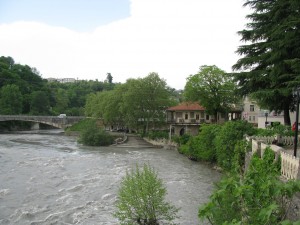
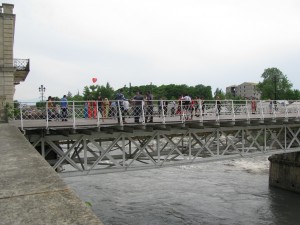
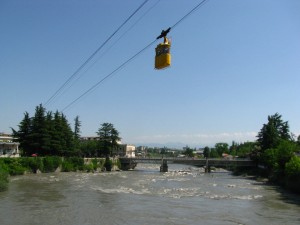
Looping back around, we return to the Rioni river and the neighborhood immediately surrounding Tsitelikhidi. There are actually three bridges here: Tsitelikhidi (Red Bridge), Rustaveliskhidi (Rustaveli Bridge), and Tetrikhidi (White Bridge), a pedestrian bridge next to another attractive garden. From here, a gondola takes visitors over the river to an amusement park at the top of a hill. On the weekends, wedding parties often stop here to take pictures, then speed around the city honking their horns and making noise.
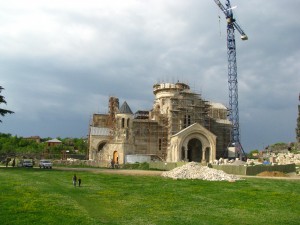
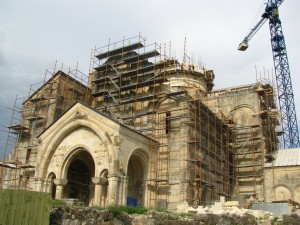
Heading north, we pass through the markets again and cross over Jatchviskhidi (Chain Bridge) to the right bank of the Rioni. After passing another curbside station–this one for marshrutkas heading to the northern villages–we climb a 200 step staircase and find ourselves at the foot of Bagrati Cathedral.
Bagrati is a thousand year-old Georgian Orthodox church, the largest and most important in the city. After the Turks razed it in the 18th century, it lay in ruins for hundreds of years. But now, with Georgia’s newly-won independence and the economic boom fueled by the IMF and other foreign investors, the historic cathedral is under reconstruction. I probably won’t be here when it’s finished, but I definitely want to come back and see it when it is.
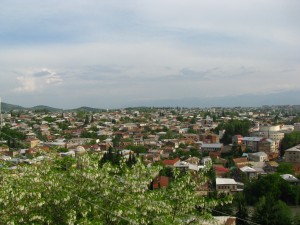
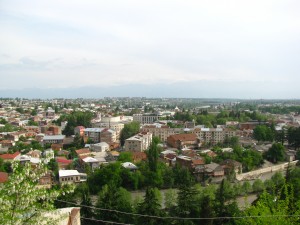
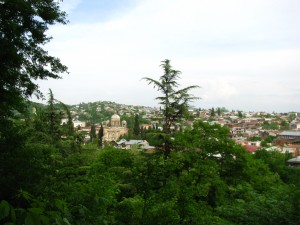
Bagrati Cathedral sits on an imposing hill with a magnificent view of the whole city. Here, you get a sense of just how big Kutaisi really is. It’s not a tall city, or a particularly busy city, but compared to the rest of Georgia outside of Tbilisi, it’s pretty huge.
Unlike Tbilisi, however, the city has had very little exposure to the West. People still stop to stare curiously at foreigners, and hardly anyone speaks English. It’s much quieter than Tbilisi, too, with fewer cars, more parks, and lots of gardens and orchards, even in the more crowded districts. People live closer to the land, and travel often to the outlying villages where they still have friends and family.
Perhaps the best way to put it is that Kutaisi still possesses that sense of rustic Caucasian innocence that Tbilisi has since lost. You can hear it in the way people laugh and see it in the way they kiss and are kissed by their children. For a city that was legendary long before the maps showed America as a separate continent, that’s no small thing.
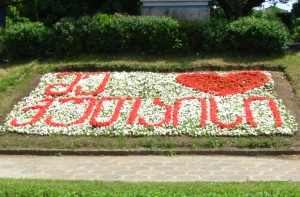
I really, really like your virtual tour! Thanks so much!
No problem!